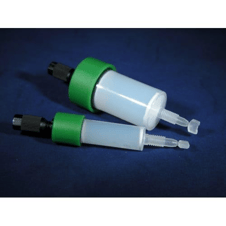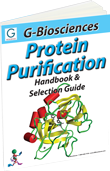Ion Exchange Chromatography Resins and Methods
What are the most common types of ion exchange chromatography (IEX) resins and how do you choose one that suits the intended application? Generally, resins can be categorized as follows:
- Strongly acidic cation resins
- Weakly acidic cation resins
- Strongly basic anion resins
- Weakly basic anion resins
- Specialized resins
Strong acid cation (SAC) exchange resins comprise a polymer matrix to which a sulfonic acid functional group (e.g., polystyrene sulfonate, polyAMPs, etc.) is attached.
Weak acid cation (WAC) exchange resins feature a carboxylic acid group (RCOO-) and have a high affinity for divalent cations (Ca2+ and Mg2+). They are also highly resistant to oxidation and exhibit superior mechanical durability.
Strong base anion (SBA) exchange resins can remove all anionic contaminants (strong acids such as hydrochloric and sulfuric acids and weak acids such as silicic and carbonic acids) in the sample and have significantly higher regeneration efficiencies compared to SAC resins.
Weak base anion (WBA) exchange resins typically feature primary, secondary, and tertiary amino groups that efficiently remove the anions of strong mineral acids but are not as effective in removing carbonate and silica ions. These resins do not have exchangeable ions and are regenerated with sodium hydroxide, ammonia, or sodium carbonate.
Specialty resins feature different functional groups (e.g., thiol, aminophosphonic acid, iminodiacetic acid, etc.) depending on the intended application. Some of the most common examples include chelating resins that concentrate and remove metals in dilute solutions and magnetic ion exchange resins that adsorb natural organic acid ions from water.
Resin Selection: Factors to Consider
Selecting the right resin for a particular application is one of the keys to ensure the effectiveness and quality of the purification process. Here are some factors to consider when choosing an IEX resin.
Isoelectric point (pl)
The pl determines whether the application calls for a cation or an anion exchange resin. When working with a protein that is stable above and below their pl, it doesn’t matter which resin you use since both can do the job well. However, if a protein is stable only above its pl, use an anion exchange resin.
pH
Strong ion exchangers maintain the number of charges and perform relatively well regardless of the buffer pH. On the other hand, the capacity of weak cation exchangers and weak anion exchangers begin to deteriorate below pH 6 and above pH 9, respectively.
The ionic form of the resin
Changing the column equilibrium buffer alters the counterions (e.g., Na+ for anion exchangers and Cl- for cation exchangers) absorbed into the resin’s functional groups. Since different counterions exhibit varying affinity strengths with a given resin, those with lower selectivity are readily exchanged for another ion with a similar charge. Additionally, elution buffers containing counterions with lower selectivity for the support will displace proteins less readily during elution.
Resin particle size
The size of the solid support may impact resolution without affecting the selectivity of the resin. Smaller particles generally provide higher resolution than larger particles but may require lower flow rates. Thus, smaller particles are used for small-scale and analytical work while larger particles are more suitable for preparative and large-scale work.
Flow rate
The longer it takes the buffer to pass through the resin, the better the resolution and capacity but may compromise protein activity. For best results, use a resin with the fastest flow rate providing the desired resolution and capacity.
Dynamic binding capacity
This refers to the amount of protein that the resin can bind at a given flow rate. Reported as mg/ml, this factor is critical when fast flow rates are required to maintain protein activity.
Applications
Ion exchange chromatography has a wide variety of applications, including:
- Purification of proteins, blood components
- Manufacturing of pharmaceuticals such as vaccines, antibody therapeutics, gene therapies, and biosimilar drugs
- Biotechnology
- Food research and manufacturing
- Water softening and purification.
- Direct CO2 capture from ambient air
- Separation and purification of metals
Image: G-Trap™ Ion Exchange Selection Kit:

Reference & tagged content for this blog is:
https://info2.gbiosciences.com/complete-protein-purification-handbook




